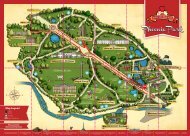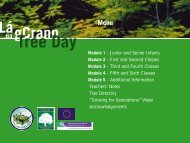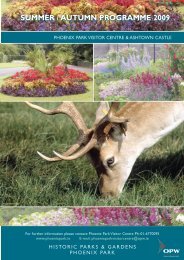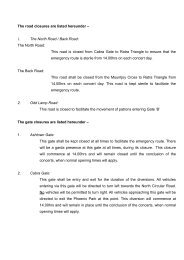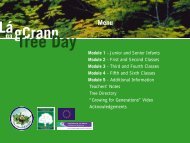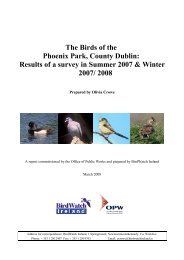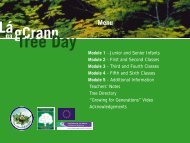Phoenix Park Conservation Management Plan
Phoenix Park Conservation Management Plan
Phoenix Park Conservation Management Plan
You also want an ePaper? Increase the reach of your titles
YUMPU automatically turns print PDFs into web optimized ePapers that Google loves.
Landscape<br />
6.1 Introduction<br />
The <strong>Phoenix</strong> <strong>Park</strong> is an extensive historic designed landscape of plantations and grassland lying between<br />
12 and 56 metres above sea level on the north bank of the River Liffey. The expansion of Dublin City has<br />
encompassed the <strong>Park</strong>, virtually isolating it from its former rural setting, but valuable views southward across<br />
the River Liffey to the distant Wicklow Mountains still provide important links with the countryside and<br />
views towards the Quays provide a link with the historic city centre.<br />
First appearing as a Royal deer park in the 17 th century, the identity of The <strong>Phoenix</strong> <strong>Park</strong> as a special<br />
landscape was enhanced by enclosure within a stone wall. Since then the <strong>Park</strong> has been used extensively<br />
for military activity and for several hundred years has contained the official residences of important political<br />
figures.<br />
The <strong>Phoenix</strong> <strong>Park</strong> is the only example of a Royal Hunting <strong>Park</strong> remaining in Ireland.<br />
6.2 Geodiversity<br />
The concept of geodiversity describes the variation of geological environments, of bedrock, soils and<br />
landscape features.<br />
The modern landscape of the <strong>Park</strong> begins at the end of the last Ice Age and is completed by human<br />
intervention over the following 12,000 years. The landform of The <strong>Phoenix</strong> <strong>Park</strong> was formed by glaciation<br />
during periodic Ice Ages. A deep layer of boulder clay was deposited by the last ice sheet over the underlying<br />
‘Calp’ Limestone. Substantial streams of melt water from the ice sheet flowed southwards over the surface<br />
of the area now occupied by The <strong>Phoenix</strong> <strong>Park</strong> towards the River Liffey. These streams eroded the surface<br />
of the boulder clay to form deeply incised channels, which today are visible as the eastern valley occupied by<br />
the People’s Gardens and Dublin Zoo, the southern valley known as the Khyber Pass and the western Furry<br />
Glen valley area. The enlarged River Liffey carved itself a deep channel, depositing terraces of sand and<br />
gravel along the steeply-sloping southern fringes of the <strong>Park</strong>.<br />
Significant features of geodiversity interest are located in The <strong>Phoenix</strong> <strong>Park</strong>. While not rare, they are of<br />
educational interest and include:<br />
• Outcropping limestone in Quarry Lake.<br />
• Unusual example of a mainly natural landscape within the confines of the City which was formed through<br />
postglacial processes; the movement of meltwater and deposition of till.<br />
• The northern portion of the <strong>Park</strong> has limestone nearer the surface. It shows a crag-and-tail landscape<br />
form, with much of its central portion being comprised of low, almost indistinguishable glacial flutes.<br />
• The geometry of the deglacial drainage system and its meltwater channels explains much of the <strong>Park</strong>’s<br />
hydrology and the position of many of the big ponds (dammed streams in channels).<br />
• The terraces formed of sand and gravel at the south side of the <strong>Park</strong> are associated with shallow, alkaline<br />
soils and high plant diversity.<br />
• Soil characteristics (wetness or dryness) are linked to land uses and biodiversity potential.<br />
• The solid geology of The <strong>Phoenix</strong> <strong>Park</strong> is linked to the architectural history, as local materials were used<br />
to build many of the residences and, in particular, it is likely that much of the material in the boundary<br />
wall came from <strong>Park</strong> quarries.<br />
40 THE PHOENIX PARK CONSERVATION MANAGEMENT PLAN



